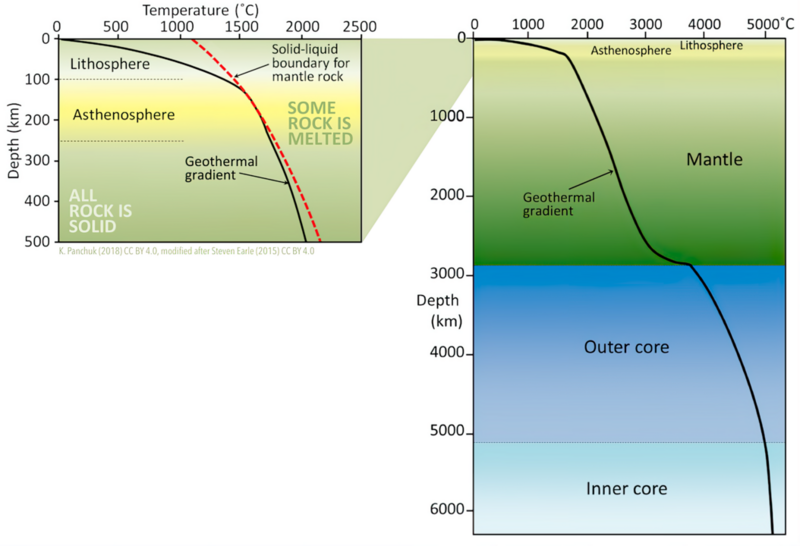
Original file (1,054 × 720 pixels, file size: 365 KB, MIME type: image/png)
Summary
Geothermal gradient (change in temperature with depth). Left- Geothermal gradient in the crust and upper mantle. The geothermal gradient remains below the melting temperature of rock, except in the asthenosphere. There, temperatures are high enough to melt some of the minerals. Right- Geothermal gradient throughout Earth. Rapid changes occur in the uppermost mantle, and at the core-mantle boundary. The red dashed line shows the minimum temperature at which dry mantle rocks will melt. Date 2018 Source https://pressbooks.bccampus.ca/physicalgeologyh5p/chapter/3-3-earths-interior-heat/ Author Karla Panchuk (2018), modified after Steven Earle (2016).
Licensing
| This work is licensed under the Creative Commons Attribution 4.0 License. |
File history
Click on a date/time to view the file as it appeared at that time.
| Date/Time | Thumbnail | Dimensions | User | Comment | |
|---|---|---|---|---|---|
| current | 14:11, 23 October 2023 |  | 1,054 × 720 (365 KB) | Isidore (talk | contribs) | Geothermal gradient (change in temperature with depth). Left- Geothermal gradient in the crust and upper mantle. The geothermal gradient remains below the melting temperature of rock, except in the asthenosphere. There, temperatures are high enough to melt some of the minerals. Right- Geothermal gradient throughout Earth. Rapid changes occur in the uppermost mantle, and at the core-mantle boundary. The red dashed line shows the minimum temperature at which dry mantle rocks will melt. Date 201... |
You cannot overwrite this file.
File usage
The following page uses this file: